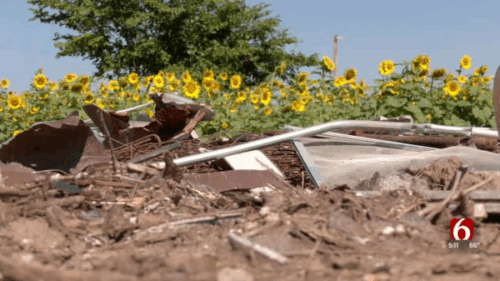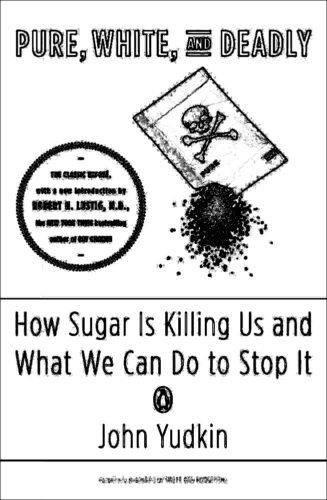When British soldiers liberated Berlin in 1945, they encountered something both heartbreaking and illuminating: German children hiding in Nazi bunkers with weapons, terrified of the world, were unable to articulate what they were actually afraid of. These children had been indoctrinated through Hitler’s propaganda platforms to believe that Allied soldiers would kill them if they surrendered.
The battlefront solution, as one British veteran recalled, was surprisingly simple:
You put a bar of chocolate in their hands and it alters the whole war – as far as the children are concerned.
A Catholic priest who spoke German would calm these remaining Nazi adherents down, and suddenly the existential threat they’d been taught to fear dissolved completely in the face of basic human kindness coupled with overwhelming force.
This historical moment offers a crucial lens for understanding contemporary political rhetoric, in terms of parenting fundamentals, particularly Elon Musk’s recent inflammatory militant-like statements at a far-right rally in London.
Engineered Fears Lack Specificity

Speaking via video link to a “unite the [white] kingdom” rally organized by political extremist Tommy Robinson, Musk deployed weaponized disunity language that follows a familiar pattern.
Musk… told the crowd that “violence is coming” and that “you either fight back or you die”.
He said: “I really think that there’s got to be a change of government in Britain. You can’t – we don’t have another four years, or whenever the next election is, it’s too long.
“Something’s got to be done. There’s got to be a dissolution of parliament and a new vote held.”
On the face of it he is calling for an end of government. It is the most anti-unifying tactic possible.
And also note the overt ignorance displayed with “four years, or whenever” and “something” as his demand for immediate action.
Such statements of weaponized disunity represent the systematic deployment of rhetoric designed not to reform government policies or win electoral victories, but to collapse the shared foundations that make democratic governance possible.
Normal political opposition seeks to change who governs or how they govern within existing institutional frameworks. Musk’s call for “dissolution of parliament” bypasses democratic processes entirely – he’s not advocating for policy changes, candidate support, or even constitutional amendments, but for militant extremists to immediately destroy Britain’s elected government.
This call to arms mirrors the text of Golding’s famous novel Lord of the Flies, when institutional authority collapses, the result isn’t liberation but an intentional state of chaos that inevitably exploits anyone vulnerable to abuse by a small authoritarian cabal. Just as Ralph’s democratic leadership in the novel protected Piggy until the system broke down and constant violence took over, democratic institutions – however flawed – provide a framework within which peaceful conflict resolution remains possible.

Musk’s rhetoric encourages people to abandon safe protective structures without offering any viable alternative governance model, creating the very power vacuum that historically leads to authoritarian capture or societal breakdown.
The “weaponized” aspect thus lies in using democratic freedoms (free speech, assembly) to advocate for democracy’s elimination – exploiting the system’s tolerance to promote intolerance, precisely what Popper so clearly warned against in his paradox of tolerance.
This intentional abuse of language has in fact been studied extensively by historians of disinformation warfare (e.g. social engineering attacks):
- Existential Threat: “Violence is coming to you. You either fight back or you die, that’s the truth.”
- Urgent Timeline: “We don’t have another four years… it’s too long. Something’s got to be done.”
- Vague Enemy: References to “the left,” “the woke mind virus,” and unspecified forces threatening British society.
- Call to Extraordinary Action: Demanding “dissolution of parliament and a new vote.”
This rhetoric creates what security experts might call a “crisis of meaning” to bypass unity and falsely generate feelings of existential threat despite the lack of concrete, specific dangers that would justify the extreme responses being advocated. “They” are coming to get “you” is how bogus “caravan” rhetoric was used in 2016 to drive national security fraud (illegal redirection of funds) for Americans involved in the disasterous Maginot-like “wall” campaign.
Historical Basis in Today’s Nazi Endgame
The parallels between Musk’s rhetoric and Nazi Germany’s final propaganda push reveal identical patterns. After 1942, when military defeat became inevitable, Nazi messaging abandoned rational policy arguments for purely apocalyptic themes designed to prevent surrender.
The regime’s massive construction projects exemplify this delusional mentality. Structures like the absurd Boros bunker in Berlin were built by Nazi slaves in 1943 as “shelters,” yet it functioned more like an above-ground prison, where thousands of Germans were crammed to cower in fear rather than meaningfully protect them. The Nazi propaganda sold death camps as freedom, entrapment as safety, total desperation as preparation for victory.
General Erwin Rommel exemplified this tragic mindset of self-destruction – when given the choice between suicide or having his entire family killed in front of him, he chose the poison pill instead of a fight, telling his family he could not bear to live under Allied occupation while condemning them to it. This selfish binary thinking – death or dishonor, with no middle ground and totally devoid of care for others – became the genocidal regime’s final message.
German children were indoctrinated with binary thinking in order to force an unnatural and inhuman choice. Hitler estimated that any ray of sunshine at all would disinfect even the youngest minds and so the binary was absolutist: fight to the death against liberation or face annihilation. And this, when Allied soldiers actually arrived offering chocolate, fresh air and daylight instead of violence and isolation, the entire ideological framework collapsed instantly.
Again, the Nazi propaganda used known effective social engineering:
- Emotional appeal (life or death stakes)
- Timing appeal (no time to think)
- Vaguery appeal (allowing people to project their own fears)
- Absolute appeal (only two options, false choice in total extremes and driven by above emotional-timing-vaguery)
Musk Grew Up on a Diet of Hitler Propaganda
Musk’s rhetoric follows this template with remarkable precision. We know his Grandfather was arrested in WWII Canada for sympathies with Hitler, and fled to South Africa to lead apartheid. We also know from Musk’s father that Elon was raised in an environment promoting Nazism. It should come as little surprise that Musk statements still create a sense of imminent civilizational collapse while remaining frustratingly non-specific about actual threats or solutions. What exactly is the “violence” that’s coming? Who specifically represents “the left” that he claims celebrates murder? What concrete policies justify dissolving an elected parliament? Isn’t this all just like South African apartheid or Nazi German rhetoric all over again?
Indeed, as with Nazi messaging that terrified German children into taking up arms, this rhetoric again asks people to believe the Hitler doctrines to act on fear rather than evidence, urgency rather than deliberation.
A God and Chocolate Test of Our Time
The British soldiers’ success in Berlin suggests we know a powerful antidote to extremist messaging: persistent human decency protected by rule of law (or overwhelming force) that contradicts the propaganda narrative of fascism. When people discover that the supposed monsters are actually offering genuine acts of kindness, the entire fear-based worldview can collapse. Is the human mind open to receive help if being trained on imposed scarcity to react always in trauma mode?
The question isn’t about ignoring real political disagreements or legitimate concerns about social change, it’s about enabling safe disagreement. That’s why Popper describes the healthiest boundary development as an intolerance paradox, where ideas can be encouraged by flagging ideas of intolerance for restriction. It means recognizing when rhetoric crossed from political argument into known propaganda techniques that have been designed to bypass rational thought in order to cause intentional discriminatory harms.
Think of it as a test not whether someone is racist, but whether someone exhibits genuine anti-racism. Claims of population decline and “white genocide” from intermarriage, also claims of color blindness, are proto-typical proofs of someone failing to demonstrate genuine anti-racism.
The “chocolate test” for contemporary political messaging might ask: Does this rhetoric encourage people to see fellow citizens as fully human and deserving of human rights? Does it promote specific, achievable solutions? Does it allow for complexity and nuance? Or does it demand immediate, extreme action against vaguely defined existential threats, dehumanizing specific targets?
Breaking the Pattern
The children in Berlin weren’t inherently extremist, given that they were responding to a traumatic narrative that told them the world was ending and only violence could save them. When that narrative was gently contradicted by reality, they could return to being children.
The tactics of using children as weapons weren’t limited to Nazi Germany’s final days. After Rhodesia lost its colonial war in 1979, white supremacist forces shifted to covert destabilization operations in neighboring Mozambique, where British-trained SAS units supported Renamo rebels in a campaign that killed over one million people – 60% of them children.
These operations deliberately targeted schools and kidnapped children, forcing them to murder their own families before being used as child soldiers in raids against civilians. The psychological warfare under the regime adopted by Musk’s Grandfather was identical to Nazi methods: create absolute terror, destroy normal social bonds, and force impossible choices between violence and death. Over 250,000 children were separated from families, 200,000 orphaned, and half the country’s schools destroyed – all under the false flag of “protecting” civilians from the legitimate government.
The parallel is unmistakable: white supremacist forces consistently use children as both weapons and victims while claiming to be their saviors.
The same pattern appears across many conflicts, from Canadian General Roméo Dallaire defusing a child soldier with an AK-47 at his nose in Rwanda by offering chocolate, to Dutch children receiving their first taste of chocolate from liberating Canadian soldiers in 1945.

I’ll say it again, that people drawn to apocalyptic political messaging aren’t necessarily lost causes. They’re often responding to injected anxieties about normal social change, regular economic uncertainty, or predictable cultural shifts. The challenge is addressing the many underlying concerns with concrete solutions and social science rather than exploiting them with fear-based mobilization. The Fabians understood this intimately when they responded to industrialization by laying the groundwork for modern data science.
As William Wordsworth wrote, “The Child is father of the Man.” How we allow outsized characters claiming paternal authority to speak to people’s fears – whether nurtured with artificial scarcity into extremism or offered surplus and conversation – shapes the society we’ll inhabit today into tomorrow.
History has already run this experiment many times. We know how Musk propaganda ends, just like he does and refuses to believe. The question is whether he can learn before he generates another global disaster of hate.
Many people struggle to articulate why certain rhetoric feels dangerous beyond normal political disagreement, so I hope to have provided some expert vocabulary and historical context to make the threat identification clear.




